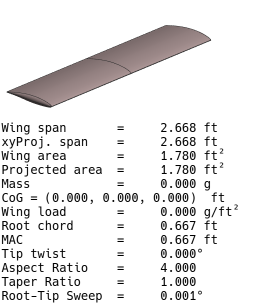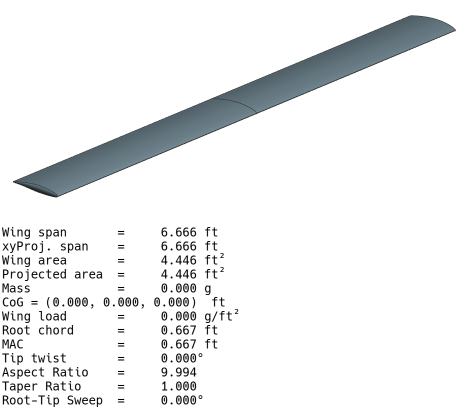
Free surface effect: NASA Report 1232
Updated November 3, 2023------------------ WORK IN PROGRESS ------------------
Purpose
The goal of this study is to benchmark flow5's prediction in the case of a free surface at infinite Froude number against the test cases described in NASA Report 1232 "A THEORETICAL AND EXPERIMENTAL INVESTIGATION OF THE LIFT AND DRAG CHARACTERISTICS OF HYDROFOILS AT SUBCRITICAL AND SUPERCRITICAL SPEEDS", By KENNETH L. WAD LIN, CHARLES L. SHUFORD, Jr., and JOHN R. McGEHEE, 1955.
Back to top
Benchmark
In a previous version of this page, the evaluations in flow5 were made using NCrit=9. However as flow5 user Kevin Ellway pointed out, the value of NCrit in water is more likely to be between 1 and 3. A low value of NCrit tends to force transition from laminar to turbulent earlier on the surface, and increases the viscous drag.
The updated project file used to perform the comparisons can be downloaded here: NASA1232_v7.23.fl5.Models
The two hydrofoils with aspect ratio equal to 4 and 10 have been modeled.


The method used for the benchmark is the uniform triangular panel method with thick surfaces. This is the preferred method in flow5 for its robustness and versatility. The other methods lead to very similar results.
The polars are of type 1. Since there is no surface downstream of the hydrofoil, the use of a T6 polar with a VPW is not necessary.
Test cases
The test cases selected for the benchmark are the measurements performed
- at 20 and 35 ft/s
- at depths 0.59 and 4.09 chords in the case of the AR4 hydrofoil
- at depths 0.84 and 3.84 chords in the case of the AR10 hydrofoil
It is to be noted that the experiments were performed in two different tanks, and that the temperature and therefore the kinematic viscosity varied between measurements. The fluid properties in the flow5 analyses were set to reflect those conditions as understood from the explanations given in the report.
The bottom and lateral surfaces of the water tanks are ignored in the analyses.
Results
Sensitivity to NCrit
AR4
AR10
The predictions tend to get more accurate as the distance to the free surface increases and as the aspect ratio increases.
Influence of depth
The influence of the free surface is no longer felt at depths equal to 4 chords.
Influence of the panel method
The results of all methods are close and within the error margin of the analyses.
Conclusion and recommendations
The free surface effect is not felt when the hydrofoil operates at depths greater than a few chords.